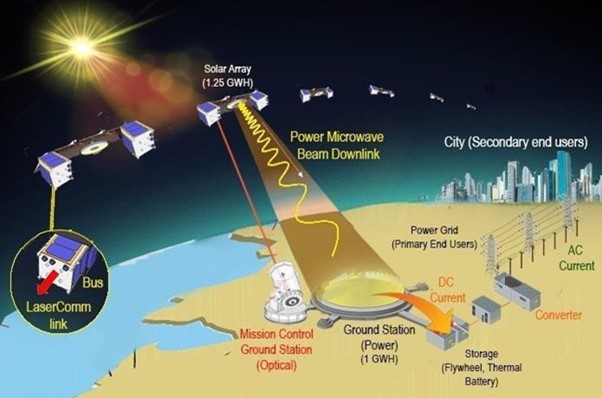As we navigate through the 21st century, the urgency to address our planet’s energy crisis intensifies. Traditional fossil fuels continue to deplete at an alarming rate, while their contribution to environmental degradation becomes increasingly clear. Amidst these challenges, an intriguing possibility has captured the imaginations of scientists and engineers alike – space-based solar power (SBSP). But does this celestial energy source hold the potential to become a sustainable solution for Earth’s energy crisis?
Harnessing the Sun’s Power from Space
The principle behind SBSP is relatively straightforward: collect solar energy in space, where the Sun’s rays are more intense and constant, then transmit this power wirelessly back to Earth. Imagine colossal solar arrays floating in the geosynchronous orbit, soaking up unfiltered sunlight 24/7, and then beaming this power to receiving stations on Earth in the form of microwaves or laser beams. It sounds like something straight out of a sci-fi novel, yet it could be a real answer to our energy needs.
The Benefits of Space-Based Solar Power
There are numerous advantages to SBSP that could potentially revolutionize our energy infrastructure:
Uninterrupted Energy Collection: Unlike terrestrial solar power, SBSP isn’t restricted by the cycle of day and night or weather conditions. This means that energy can be collected constantly, ensuring a reliable, uninterrupted power supply.
Greater Energy Efficiency: In space, solar power is approximately five times more intense than on Earth’s surface. This increased intensity translates into higher efficiency of energy capture, making SBSP potentially more productive than its terrestrial counterparts.
Reduced Environmental Impact: SBSP would produce virtually no greenhouse gas emissions, presenting an enormous advantage over fossil fuels.
Challenges in the Path of SBSP
However, realizing SBSP is not without its hurdles:
Technical Complexity: Building and maintaining large-scale infrastructure in space is no small feat. It involves overcoming significant technical challenges, including the safe and efficient wireless transmission of energy back to Earth.
Financial Investment: The upfront cost of developing and deploying SBSP infrastructure is substantial. Given its experimental nature, it is a risky investment and might not yield immediate returns.
Regulatory Concerns: There are numerous legal and regulatory issues related to the use of space and the safety of energy transmission that would need to be addressed.
Despite these challenges, the promise of SBSP has reignited interest among scientists, governments, and even private companies. As technological advances make space more accessible, and as Earth’s energy needs grow more pressing, the prospect of SBSP transforms from a futuristic fantasy into a realistic solution.
At this stage, it is too soon to affirmatively declare space-based solar power as the definitive answer to our energy crisis. However, it presents a compelling potential solution, one that warrants rigorous exploration and investment. As we stand on the brink of a new era in space exploration, it seems fitting that our next giant leap for mankind may involve turning to the cosmos to power our future.

